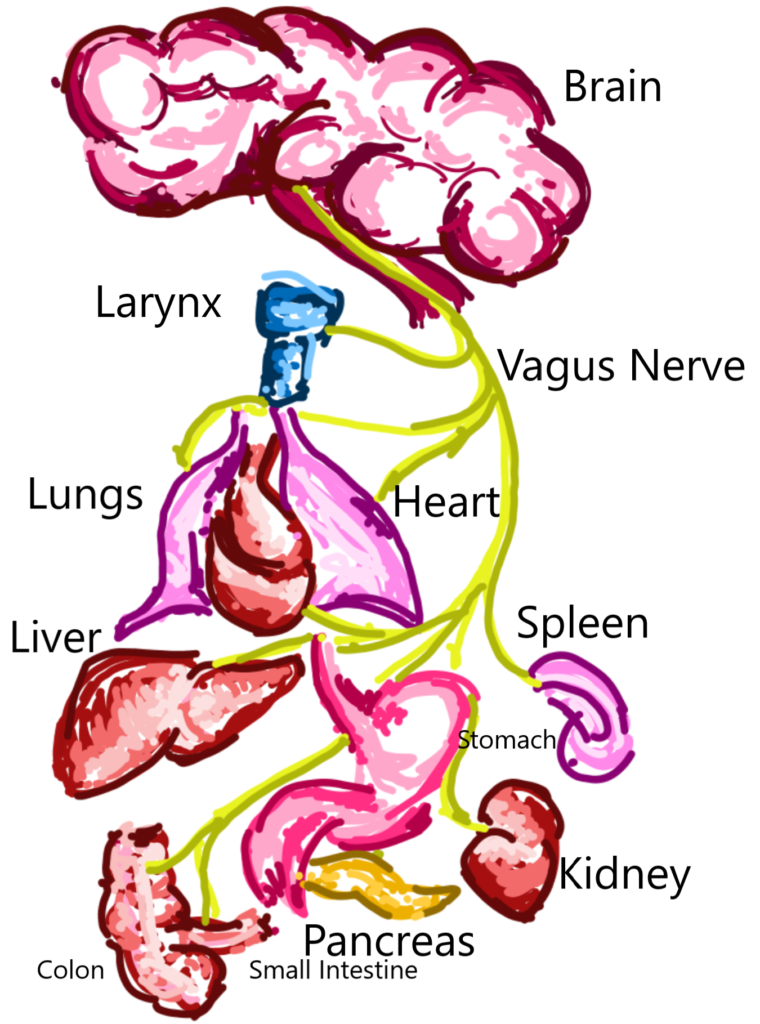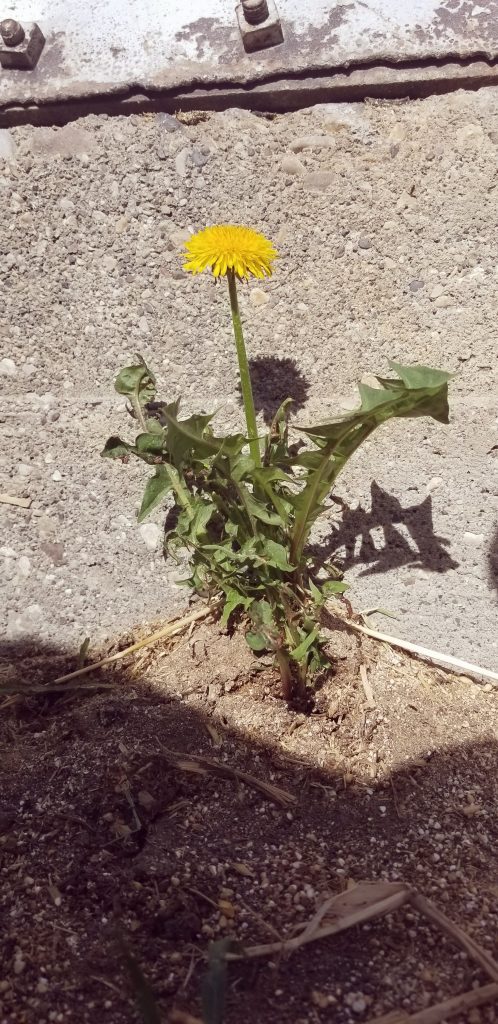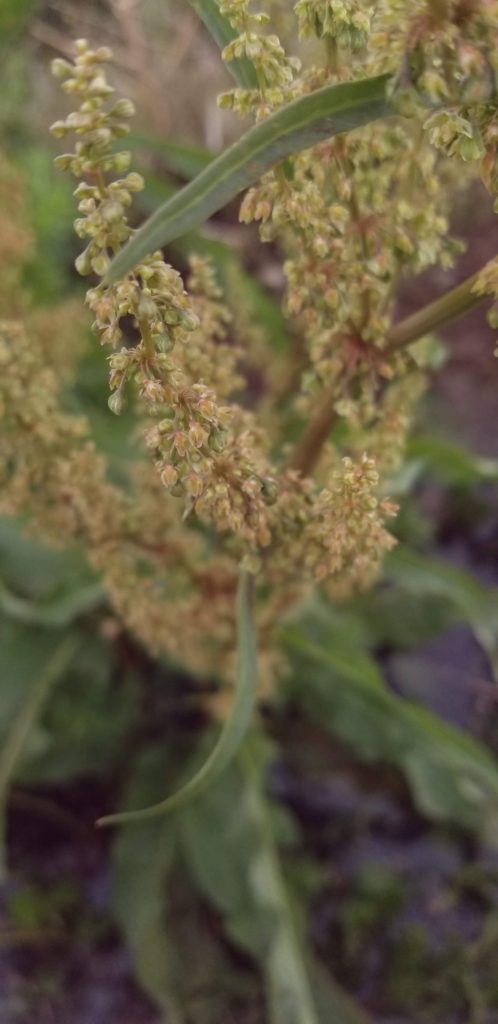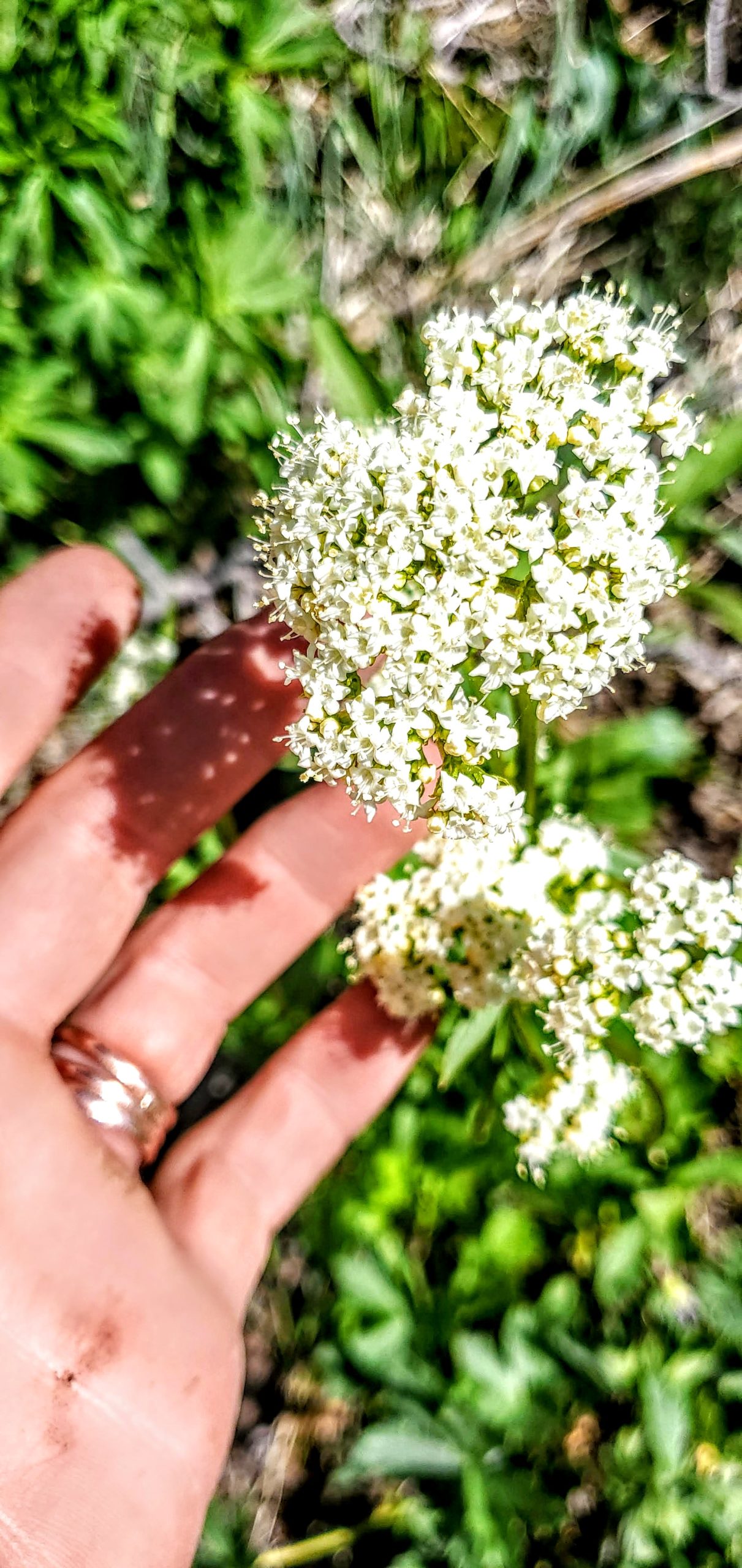The Vagus Nerve – Digestion & How BITTERS Affect Them BOTH
In the realm of Herbalist, digestion is King to balancing the entire system. This brings diet and lifestyle, efficiency and consistency into the forefront of balancing a body in distress. When dealing with any imbalance, we work with the body as a whole. The root being where one would start. Digestion is this root. Bitters are the roots to employ to bring on a beginning to reestablishing homeostasis. But why do they work? How do they work? What makes this simple application of remedy so effective? The wanderer, the nerve more generally known as Vagus holds some answers to these questions.
Starting At the Root
Before moving deeper into our discussion of the Wanderer I feel this question needs to be answered – What makes digestion healthy? I have been saying for years, nature is natural, and we are nature. When we eat nourishing, natural foods our bodies can understand them. Nature knows nature, and our cells need natural because they are too! When we implement clean eating, and choose health encouraging options of food. Our digestion is optimized. With this, acids and enzymes are secreted properly to break down foods. As well as nutrients being thoroughly assimilated to nourish our cells. The system works and it works well with natural, health encouraging foods.
When these positive attributes happen every time we eat, health is easily attained and maintained. Not only do healthful foods create this environment, but they encourage it. Certain plants that will come into your life when choosing nature as your food will at first not be pleasant. This is because of taste, and why we have receptors of taste to begin with. Bitter herbs create an environment to have a properly functioning digestive system. As this is attained, inflammation is soothed, our immunity is boosted, and our brains function at an optimal level. Generally, we feel better, are able to fight sickness off more easily, and live healthier lives.
The go to herbs for digestion are Bitter roots, leaves, and sometimes seeds. The bitter group of plants is incredibly active and stimulating to the body. Specifically, they activate our digestive system. By doing this, bitter plants soothe our appetite and calm cravings. Also, bitters assist our bodies in managing healthy blood sugar levels. Along with all of these great benefits, some specific bitter herbs have even been shown to lower blood cholesterol levels.
How & Why
All of this is awesome, and great to strive towards. We want to feel better on a daily basis. The promise of a long, thriving life is also appealing. But how does this simple fix work? There must be a catch to all of this… right? I aim to show you there isn’t. Here I will be highlighting occurrences in the body that create reactions to a balanced, healthy digestive system. Why these simple implementations of plants can be life changing. And most importatntly… HOW bitter herbs, salad greens and the like take care of these actions naturally.
Anatomy of the Wanderer
When we eat a meal. We tend to strive for delicious. Satisfying and satiating to our cravings. This has become the norm of the Western Diet. But, are we truly telling the senses of our body’s appropriate messages? Are these goals of satisfying, ones that provide a healthy response for digestion? What does sweet say to our bodies? How about savory? Do these tastes promote health on their own? The Vagus nerve holds answers to these subjects in question. The wanderer being the key to not only our digestion. But breathing, aspects of the endocrine system, and mood. Scientists are finding that not only does the gut bacteria hold aspects of these conditions. But our Wandering Nerve is linked to these digestive issues as well.

The Vagus nerve, also known as the wandering nerve is our 10th cranial nerve. It’s nickname, the wanderer, comes from the fact that though it stems from the brain. Specifically, the Medulla oblongata. The Vagus nerve meanders its way through the torso. It is connected to the lungs, the stomach and spleen. Even the heart, liver, larynx, and small intestine. Specific Vagal nerve endings are found inside the liver and small intestine.
As the Vagus Nerve meanders through the body, it’s list of duties becomes more and more varied. Because of this, reactions that occur from stimulating it are also diverse and encourage many functions. Not only do the actions of the Vagus Nerve include digestion. It monitors heart rate and functions of the voice box like coughing and vibrations that lead to speech. The nerve endings that are found in the Small Intestine lead to control of that smooth muscle. Hormonal secretions of cholecystokinin & ghrelin are two that are direly related to the efficiency of digestion (more on these later) The Vagus nerve also plays a large role in immune responses and mood. All of these reactions make the Wanderer a key component in health of the physical and emotional body.
BACK WHEN WE WERE FORAGERS
Because we are focusing on digestion and connecting the Vagus Nerve to Bitter herbs. I would like to explore the beginning of the importance of taste. There are many reactions throughout the body directly related to our taste buds. BUT, at the beginning of all these internal responses, lies the mouth. It is known that the salivary glands activate when we see, smell or even think of foods we enjoy. What makes the brain sense this and react are our Taste Receptors or taste buds. There are specific ones that sense sweet, salty, savory and yup, bitter. Taste Receptors are components of our taste buds. There are many different TRs but we are focusing on the 35 different T2Rs which are our bitter buds. T2Rs are what refer to the Bitter Receports.
They are located in the mouth, brain, stomach, and both intestinal tracts. T2Rs have even been located in the lungs. Each location of these T2Rs maintain a different response. Those in the lungs, are not necessarily linked to digestion. BUT they are correlated with Vagal Nerve stimulus. This could be a factor in linking the Gut Balance to Mood alongside the Bacterium that thrive in our small & large intestines.

Historically, when we were foragers, instead of grocery store shoppers. We relied upon these receptors for sustaining life. When a new plant or berry would come across our path. We then would use our very sensitive body responses to decide if this was safe to eat. Most plants that are highly toxic & some that are deadly taste of the Acrid classification of Herbal Actions. This action or taste being so bitter that vomiting usually occurs. Our bodies responding to ELIMINATE the substance that was just added to the inside. An all-natural pumping of the stomach. Coming just from a response to taste.
In this respect, Bitter is generally linked to poison. The more intensely bitter tasting a plant is will indicate its level of toxicity. Therefore tasting the new plant our foraging relatives would come across. Would tell us to whether to flee or forage more. When we tasted it, if it was overwhelmingly bitter, we would spit it out, and move along. Then, it was clear our new plant discovery was not one to add to the list of edibles. Later in human history we began to realize that this bitter sensation was nourishing somehow. Bitter herbs were used for stomach complaints & in the spring when food had been scarce through winter. We would ingest large amounts of these bitter plants as they came up through the snow. Thusly our appetites would remain satiated more easily.
Imagine coming out of winter when your food caches were running low. Spring would bring the forest to life again. BUT the foraging of Midsummer was still months away. These bitter greens. Buds and the like would be a staple for this time of year. We did survive this. Fasting naturally. Consuming all we could when we could. And as we know now. Many of our first bloomers of Spring are those bitter greens. Dandelions, arugula varieties, yellow dock, chickweed, burdock leaf, yarrow, and mustard greens. All bitter to the taste buds. These clues are HUGE to me… are you starting to see how this all correlates with healthy digestion?
Fast forwarding to present times. We are not the foragers we once were. Now we go to the store for our food. Bitter plants are in the produce section. But do we go for them? Do you grab a bunch of organically grown Dandelion greens and think ‘Oh DELICIOUS! Let’s make a salad out of this!”. If you do. That is AWESOME! If not, what food choices are you making in the Grocery Store? Picture your grocery store cart. What is it full of? Do you see stimulating plants in it? Or is it full of Boxed foods, starchy white vegetables, and sweetness from milk, yogurt, and the like. This has become the new challenge of today.
T2RS IN DIGESTION
I hope you are wanting to be more connected to these aspects of your body. It is always amazing when we dive in and understand the whys of it all… connections are inevitable. They all link to another key aspect of how. Because of these reciprocations within our system, we can see, feel and sense why herbs are so effective. The mechanical actions of our Taste Buds and more specifically… individual & different Taste Receptors are the reasoning behind many functions in the system. With the addition of bitter plants to our salad plates, we are encouraging a new reaction in the digestive body. This activity is stimulated by the T2Rs and what they say to the Wandering Nerve.
As I mentioned previously, the Vagus Nerve is responsible for many reactions in the body, including ones of the Endocrine System. Hormones are key components of communication in the body to the brain and different systems of organs. Our digestion has it’s own set of hormones that talk to the stomach and then the brain. The wandering nerve also sends signals from organ system to brain and back again. The T2Rs are a big component of these messages getting around the body.
T2Rs target our hunger responses by releasing Cholecystokinin or CCK. Further this hormone stimulates another gastric hormone, ghrelin. BOTH affect the Vagus nerve and majorly important components of digestion. Monitoring hunger responses, cravings & gastric emptying. Hormones play a critical role of a healthy digestive system & BITTER Taste Receptors are the start of this all happening.
HORMONES AREN’T JUST MOODY
Cholecystokinin – CCK is a hormone that regulates actions of the Gastrointestinal Tract or GI. The communication of this hormone includes emptying and intake of food into the stomach. The release of Pancreatic fluids that contain enzymes, hormones and other aspects of digestion and assimilation. Gastric emptying is also a response of CCK. Signaling the stomach to eliminate digested food into the Small Intestine. CCK also contributes to the production of gastric juices that facilitate digestion of saturated fats, long chain fatty acids, amino acids and small peptides. This being the connection to the Liver & Gallbladder where Bile is created, concentrated, stored & released. Each of these actions aids in proper assimilation of the nutrients contained in the foods we eat.
Receptors for CCK-1 are found on Vagal nerve afferent fibers. This showing how these digestive responses are so closely related to Vagal Nerve functioning. Also leading to show how important stimulus to the Vagus Nerve is. Leptin receptors are also found on these Vagal afferent fibers. CCK-e and Leptin work closely together by inducing short-term inhibition of food intake, managing cravings & stomach hunger. Which thusly results in long term weight loss. This is a part of the intermit-in fasting technique. How we can better manager our blood sugar levels while maintaining healthy body mass indexes.

Each element of these responses is clearly important to digestion and health. But there is another aspect of why this hormone, CCK is important. When it is stimulated by the T2Rs in the mouth, digestion is slowed down. Again, historically this slowing of our digestion was a life or death response. The Bitter plant would be taken in, if by accident or experiment. Thus, we didn’t die. The slowing of digestion, regulated by CCK, would allow our stomach to thoroughly break this substance down. Then the liver would receive it’s toxins in small doses, giving it the time it needed to detoxify the substance and send it away for elimination.
The slowing down of digestion keeps us fuller longer. This action being regulated by the gastric fluid known as Gherlin. A 28 chain amino acid peptide that is produced by the stomach in the presence of CCK-1. This keeps our appetite satiated as our food digests at a snail’s pace. Not only keeping our demand and need for meals in-between meals low. BUT also allowing our bodies to break down and take in the nutrients we need. Eliminate those that we don’t. AND keeping us satisfied and nourished all by consuming less.
ALL-IN-ALL
This is a subject that is still being researched by scientests. Every year we accumulate more information regarding how and why the Vagus Nerve responses matter for the health of our digestion. How mood is connected to the gut microbiome & thusly the Vagus Nerve. Our bitter Taste Receptors are a big component of these responses occurring regularly. And because of the modern way of eating… the Standard American Diet doesn’t hold the acronym S.A.D. completely by mistake… T2Rs are neglected completely with this way of eating. Our modern world keeps us moving at an insanely fast pace. So we slam food into our mouths without thinking about it. Mindful eating, a concept that works well for me an my clients is a way to begin this shift. Alongside regular intake of Bitter Constituents from plants. When we choose healthy foods and work to shift habits like implement bitter remedies into our life. We are already encouraging a healthier system which inevitably will lead to a more vital, long lasting life.
The Wandering Nerve is responsible for a lot of actions. AND it the stimulation of it is thoroughly neglected. We don’t need synthetic simulation to light this nerve up! All it takes is a bit of research. Discipline, and dedication to nature vs nurture. I am happy to be your Herbalist, and more than happy to continue this discussion…


